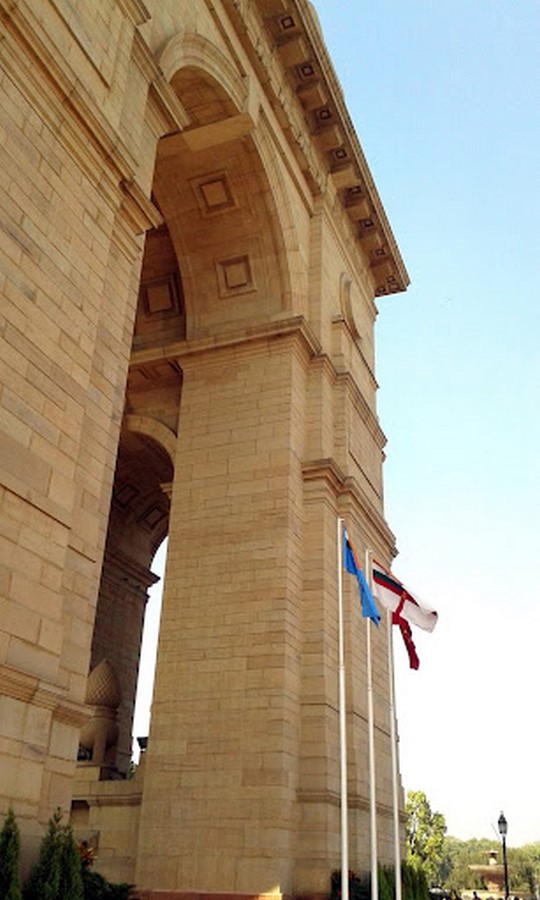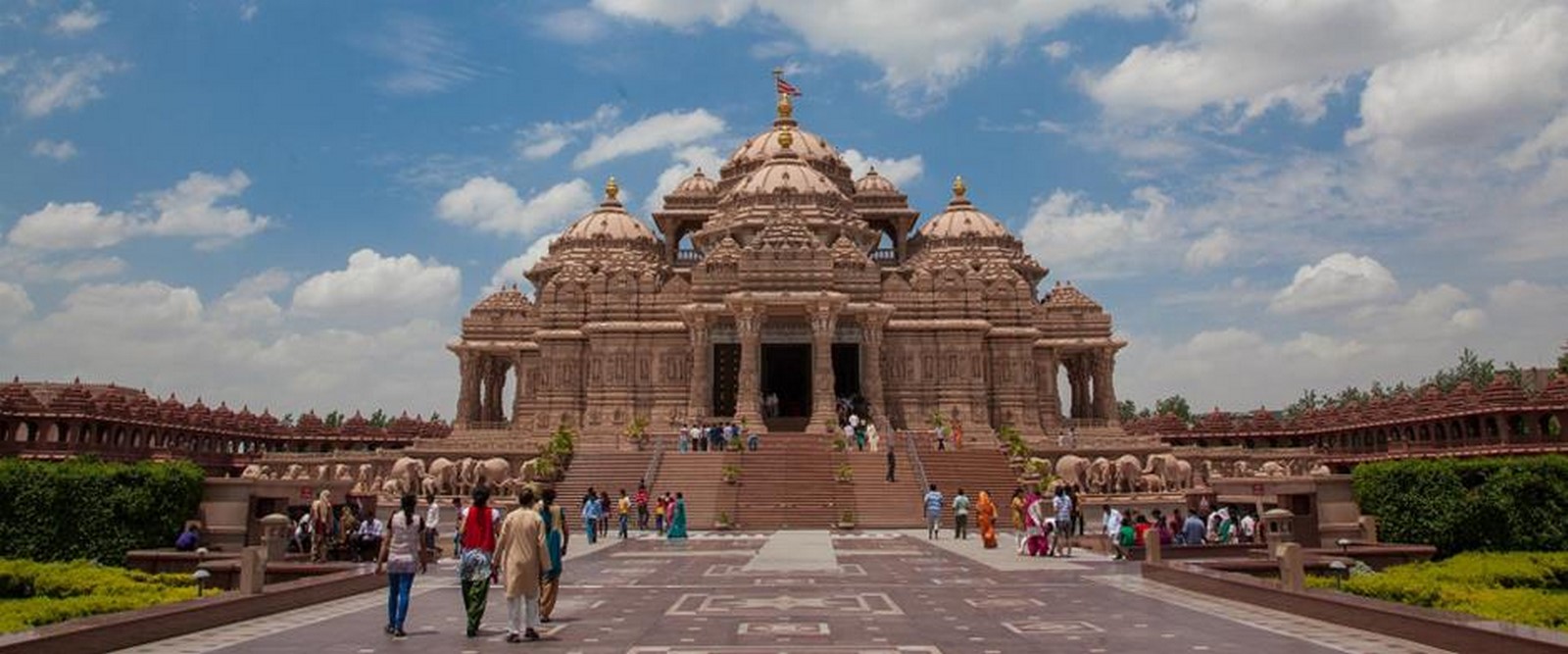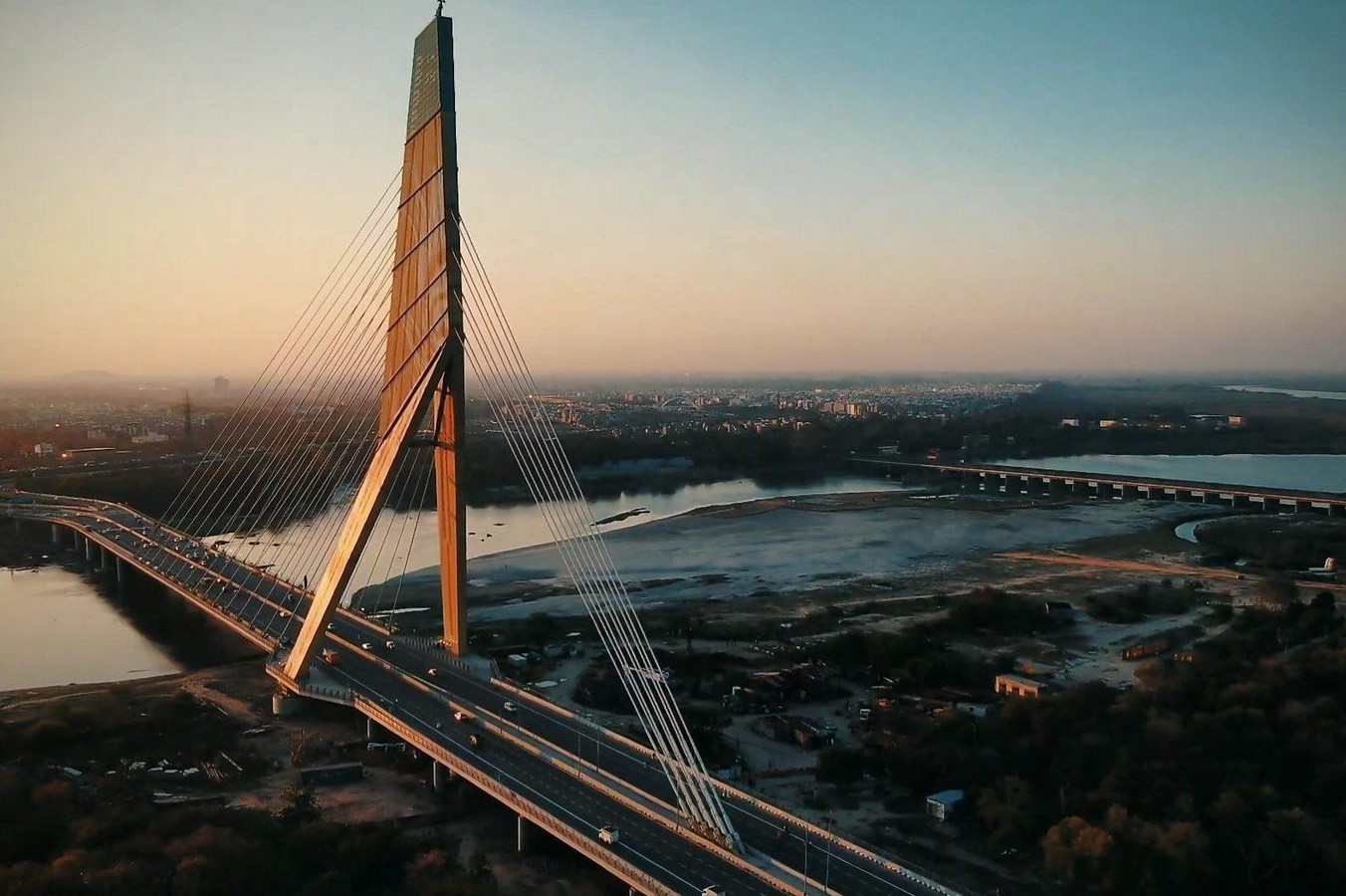Presenting “Delhi”
Delhi has always been regarded for its royal history and phenomenal architecture, dating back a thousand years. The most recognized landmark in Delhi is India Gate. Every native has good memories of this location, whether a day out with family or a late-night drive around with friends. Over the previous two decades, Delhi has seen significant change, dramatically altering one’s perception of the city. It has evolved to be authentic, modern, and most certainly the version with something to offer everyone, whether native or not.

New Age Temple
Near the Yamuna River in east Delhi, the Akshardham Temple has around 20,000 statues, floral themes, stunning arches, and elaborately carved pillars. The spacious gardens of Akshardham Temple cover 100 acres and are embellished with beautiful water basins and intricately carved pavilions. The Mandir is an architectural homage to traditional Indian Hindu architecture. It was created with an eye toward the ancient and middle-aged Indian treatises on architectural science – the Shilpa shastras, which have inspired the mandir’s design and construction from its characteristic carving technique and proportions. Accordingly, the mandir is made without ferrous metal in construction.

The Akshardham mandir comprises 234 finely carved pillars, nine magnificent domes, 20 quadrangle spires, and 20,000 statues of India’s spiritual leaders. The Hindu temple has a height of 141.3 feet, a width of 316 feet, and a length of 356 feet. Each worshipfully carved pillar, ceiling, and dome inside the mandir tells a devotional story, provides a darshan of a deity, or depicts an occurrence from Bhagwan Swaminarayan’s life.

A team of eight holy men and academics of the Pancharatra Shastra, a Hindu scripture on building and deity carving, oversaw its construction. More than 11,000 artisans, construction workers, and volunteers contributed to constructing this magnificent monument, which now stands tall as a symbol of India’s rich cultural and religious legacy. The temple complex also includes exhibitions on events in Swaminarayan’s life and India’s history. The property also includes an IMAX cinema and a musical fountain based on the message of the Upanishads. Akshardham Temple likewise holds the Guinness World Record for the world’s largest comprehensive Hindu temple.
Connecting within the city
The Signature Bridge is a cable-stayed cantilever bridge that spans the Yamuna River at Wazirabad and connects Wazirabad to East Delhi. It is the first asymmetrical cable-stayed bridge in India. With its 154-meter-high viewing box that serves as a selfie spot for visitors, the pylon of the Signature Bridge is the tallest structure in Delhi and is double the height of Qutab Minar. It cuts travel time between north and northeast Delhi in half.

The Signature Bridge project was conceptualised in 2004 and authorised by the Delhi cabinet in 2007. Construction was supposed to begin that year. However, it didn’t begin until 2010, the planned completion date. That approval came in 2011; the deadline was pushed to December 2013. The completion date was moved back to June 2016 and July 2017. The government allocated Rs 100 crore for the project in July 2017 and set a new deadline of March 2018, which was further postponed to April 2018, June 2018, and now October 2018.
The bridge deck is made of steel and concrete, and it has a dual carriageway with four lanes and a total width of 14 metres. Its 154-meter-high slanted steel pylon and exquisite stayed wire design make it an eye-catching and formidable addition to the Delhi skyline.
Evolution of Central Vista
During the colonial era, famous British architects Edwin Lutyens and Herbert Baker envisioned the Central Vista complex as India’s administrative centre, housing all government facilities. The plan was created using conventional urban planning tools, and it included a strong axis, an emphasis focal point, the development of essential nodes, and a clear termination point. It was one of the world’s largest projects at the time, created and intended to reflect India’s spirit, progress, and worldwide significance.
Indian influences influenced the overall design of Central Vista. It comprised the use of red and beige sandstone, which had been used for the monumental architecture of Delhi since the 13th century; the modelling of the dome of Viceroy’s House on the Great Stupa at Sanchi; ancient Indian bell capitals for the Pillars of Dominion placed between the Secretariat Blocks; and countless features of Indian architecture – jalis (pierced stone screens), chhajas (projecting overhangs), chhatris (pillared cupolas), and more.
The Central Vista Redevelopment Master Plan aims to increase organisational productivity and effectiveness by equipping it with a highly useful and purpose-built office infrastructure. Consolidating all 51 Central Government Ministries into ten Common Central Secretariat buildings facilitates the circulation of persons, papers, and goods, enhancing administrative efficiency. The proximity and ease of inter-departmental movement and adaptable and modular floor patterns allow the government to perform more efficiently and productively. Central Vista’s public areas, including the National Museum, IGNCA, renovated Central Vista Avenue, India Gate plaza, and lawns, were enhanced and made more accessible. People reach Central Vista Avenue through public transport or park their vehicles at the dedicated parking space available at the site. Further, dedicated spaces for social gatherings in the refurbished avenue provide an opportunity for tourists for leisure and recreation.

The Central Vista Development/Redevelopment Master Plan emphasised environmental sustainability, with a comprehensive strategy to using centralised systems and infrastructure, promoting the use of public transportation, and having upgradeable technologies, systems, and services. Strict procedures were implemented concurrently to reduce the environmental impact of the Central Vista project during the development phase. On-site air pollution, noise, wastewater discharge, soil erosion, and construction trash were reduced.
After receiving approval from the authorities, trees were planted in the NTPC-developed Eco-Park in Badarpur. Furthermore, all construction and demolition waste acquired from demolishing existing structures was treated and repurposed for construction at a C&D waste treatment plant.
Seeking for more
Delhi is a very complex and multilayered city. Delhi underwent drastic changes over a while. Citizens raised opinions in favour of their beliefs, but in the end, they started to recognize conversion from a historical city to a city that is modern in its ways while it pays homage to the culture, heritage and sacrifices.
References:
14 years in the making, Delhi’s signature bridge is still a project under construction (2018) Hindustan Times. Available at: https://www.hindustantimes.com/delhi-news/14-years-in-the-making-delhi-s-signature-bridge-is-still-a-project-under-construction/story-ZIIgXoCPvQT7DeHayYGDGM.html (Accessed: January 8, 2023).
Central Vista: Aatmanirbhar Bharat: Make in India Central Vista | Aatmanirbhar Bharat | Make In India. Available at: https://centralvista.gov.in/ (Accessed: January 8, 2023).
Delhi’s architectural face – outlook. Available at: https://www.outlookindia.com/website/story/delhis-architectural-face/237694 (Accessed: January 8, 2023).
Mandir Swaminarayan Akshardham New Delhi. Available at: https://akshardham.com/explore/Mandir/ (Accessed: January 8, 2023).
Signature bridge Signature Bridge | District North East, Government of Delhi | India. Available at: https://dmnortheast.delhi.gov.in/tourist-place/signature-bridge/ (Accessed: January 8, 2023).
















